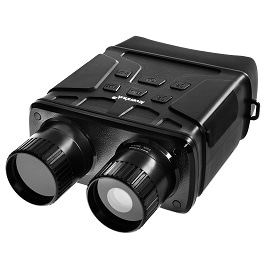Night vision is an optoelectric, advanced device that allows you to make observations in low and residual light. It also allows you to maintain orientation in the field and determine your location in twilight. Thanks to light transducers, night vision devices amplify residual light by several or even dozens of times, so the user gets an image in light that can be seen by the human eye. Night vision devices are great for use at night and in dimly lit rooms. Only natural starlight, moonlight or residual artificial light is needed to produce a night vision image.
The image in a night vision device is usually transmitted in green. This is due to the sensitivity of the human visual organ to this particular color. In green light, the eye is able to perceive more details than in any other color. In addition, with prolonged observation, the green color is not so tiring to the eyes.
There are four generations of night vision devices, although in Poland the use of I and II is allowed in civilian use. With Generation I, on a cloudless night, you can see the image at a distance of 100 meters, while with Generation II you can see from 250 to 500 meters. A variety of night vision accessories like infrared illuminators (LED or laser) can be fitted to enhance the performance of the device. With such a device, in the case of a first-generation night vision device, visibility can be increased to 200 meters. Infrared emitters also allow night vision devices to be used in virtually total darkness. They generate infrared radiation, which, although invisible to the human eye, illuminates the target visible in the night vision device



























